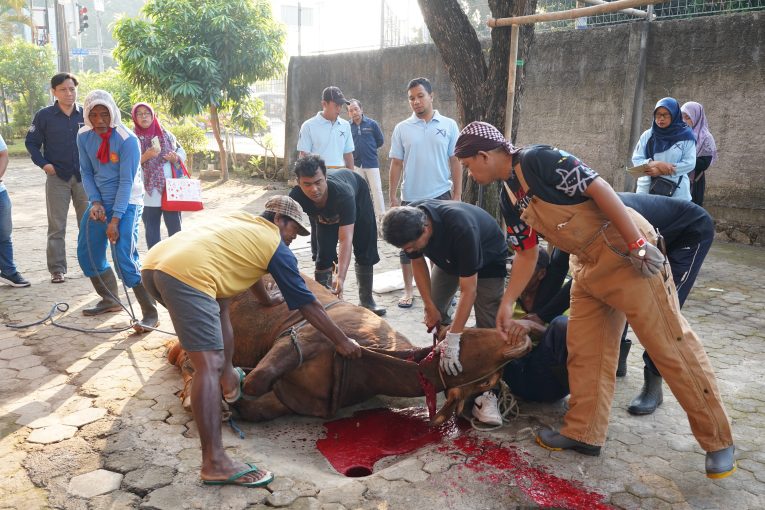
Faculty of Animal Science UGM has distributed a sacrificial cow to a partner village in Ngroto, Girimulyo, Kulon Progo. This distribution has been carried out for the past three years.
“The distribution to the partner village has been conducted for the last three years. We managed to obtain 152 kg of meat from the cow slaughtered there yesterday,” said Tian Jihadhan Wankar, Ir. S.Pt., M.Sc., Ph.D., IPP, Chairperson of Iduladha 1445 H at Faculty of Animal Science UGM.
He added that for this year’s Iduladha, Faculty of Animal Science UGM slaughtered four cows and five goats. The sacrificial meat will be distributed to external parties in need. This activity aligns with the SDGs goal 2, zero hunger; goal 3, good health and well-being; and goal 17, partnerships for the goals. “The meat will be distributed to communities in need,” he added.
The sacrificial animal slaughter at Faculty of Animal Science UGM took place on Wednesday (19/6). The slaughter was carried out by lecturers and staff who had previously received training.
How to Store Meat
Previously, the Deputy Chair of the Halal Center UGM and lecturer of Faculty of Animal Science , Ir. Nanung Danar Dono, S.Pt., M.P., Ph.D., IPM, ASEAN.Eng., reminded that sacrificial meat must be cooked or stored immediately after slaughter because the longer it is left out, the more microbes will live and grow in the meat.
Nanung explained that the quality of sacrificial meat must be maintained when stored. If it is dirty, wash it with clean water and cook it immediately. If the meat is clean, there is no need to wash it and it can be stored directly. Additionally, when storing meat, it should be cut into small pieces first and placed in a clear plastic bag of 1 kg size.
Author: Satria
Translator:
Photo: Margiyono
